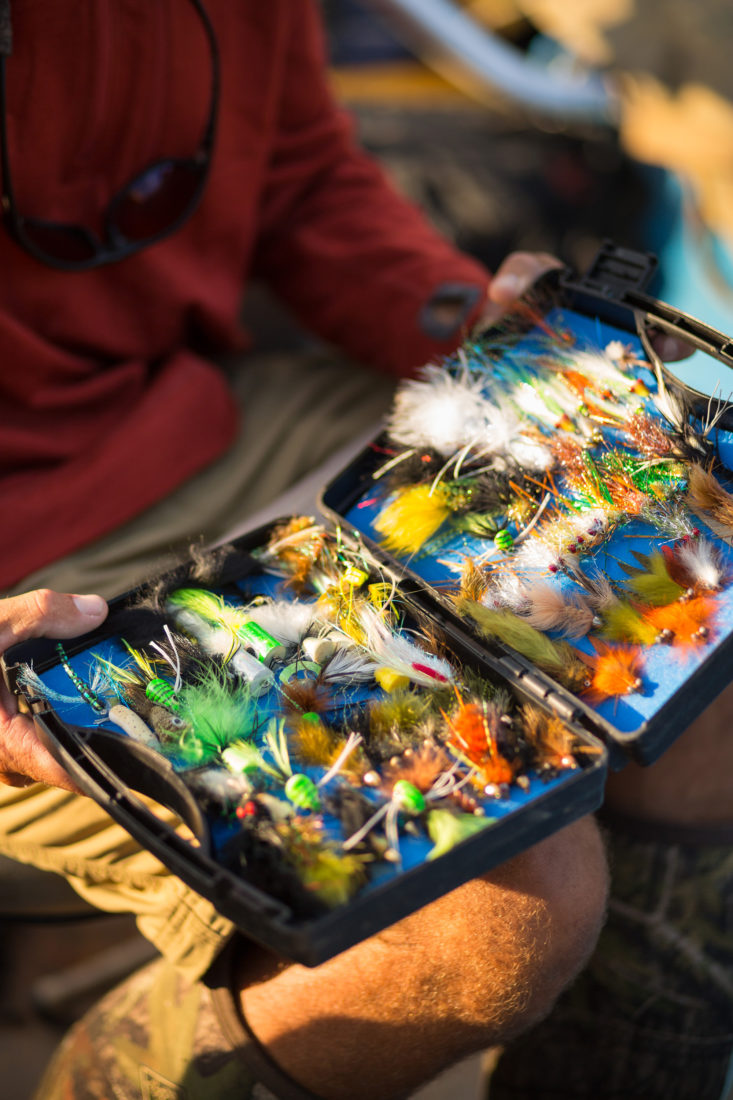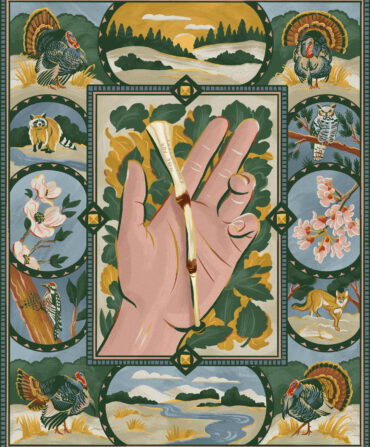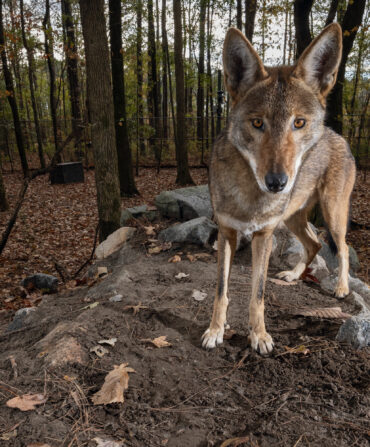Sporting South
Best of the Sporting South: Field Guides
A top-notch guide can turn a bad day into a good one and a good day into an unforgettable experience. Hedge your bets with any of these eleven standouts
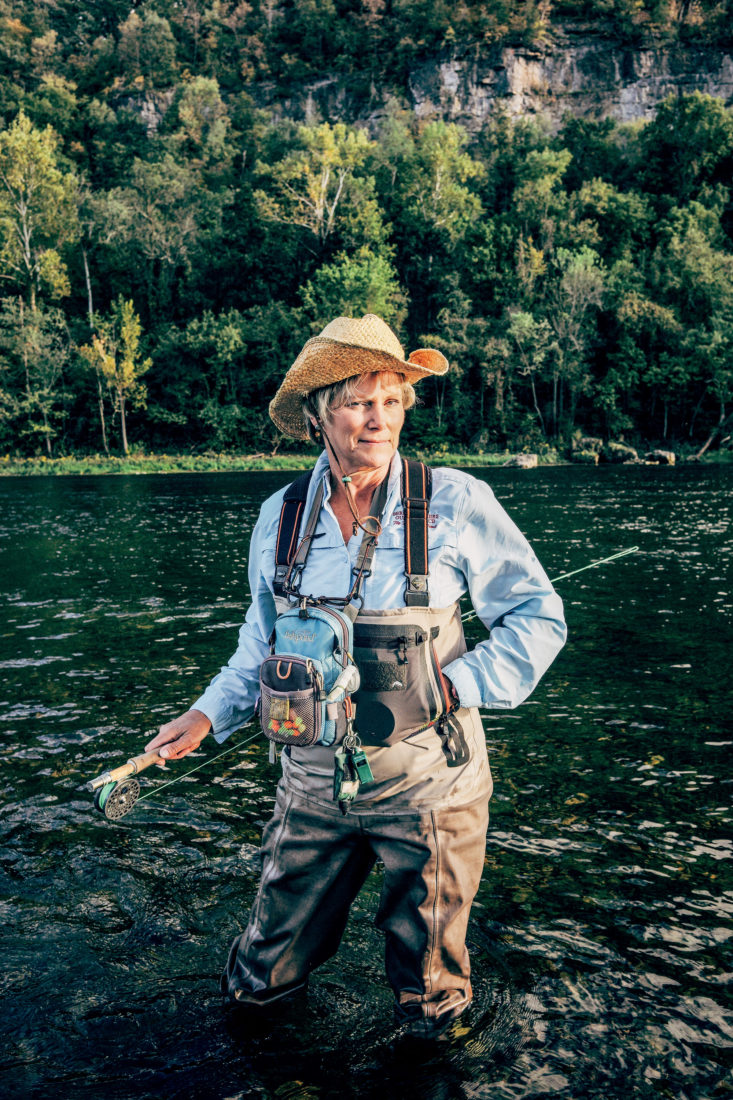
Photo: Peter Frank Edwards
Part expert, part chum, and part shrink, a hunting or fishing guide is all about maximizing how much you enjoy your time afield or on the water. It’s a given that guides show up with advanced skills and deep local knowledge. But guides all have their own strengths. There are those who enjoy helping clients experience local culture and color, and others who have a laser focus on getting a rod bent or a trigger pulled. Some love a family trip. The guides featured here offer varying areas of expertise, except one thing doesn’t vary at all: Each is at the top of his or her field, and ready to help you take your game to the next level.
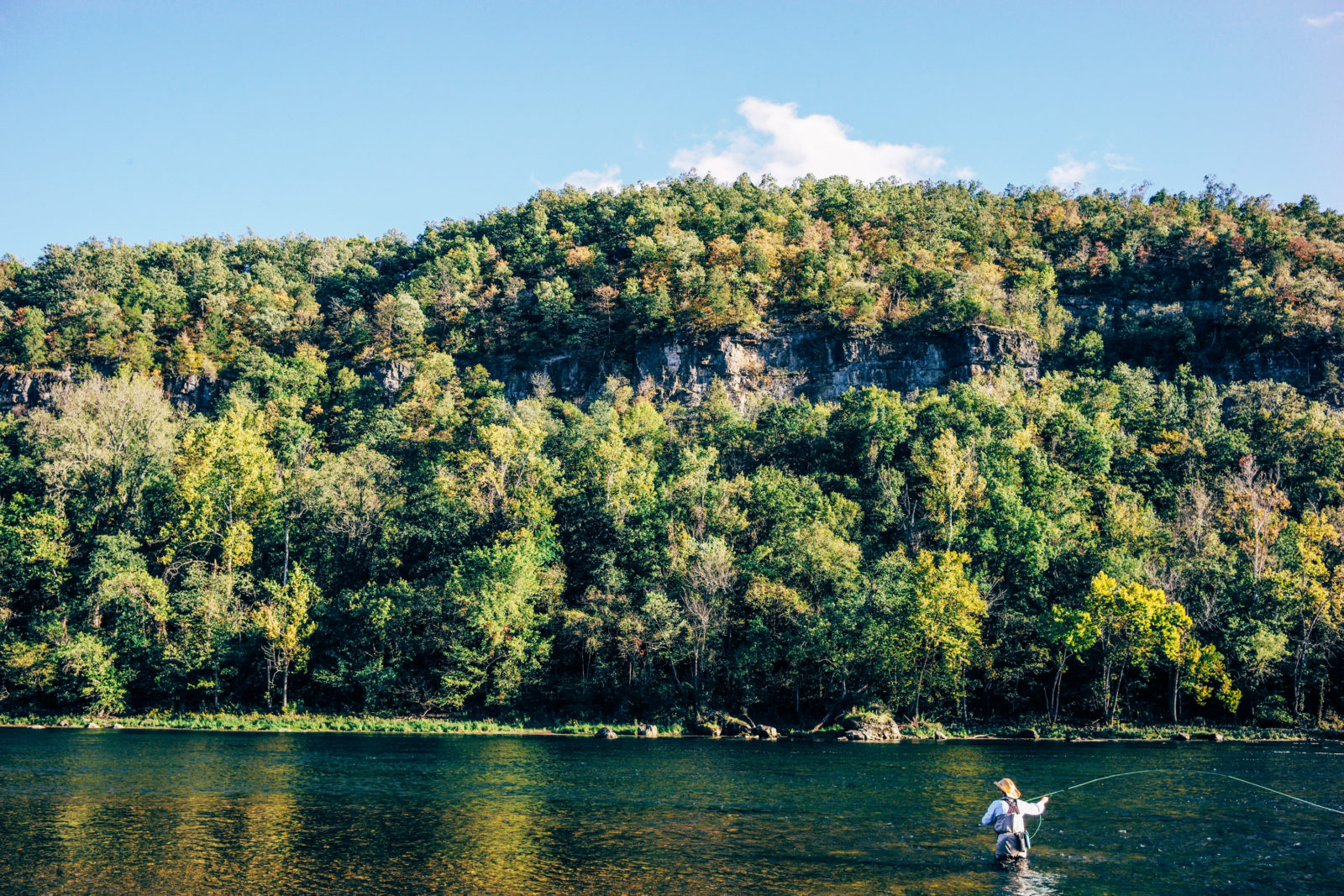
Photo: Peter Frank Edwards
Lori Sloas
Cotter, Arkansas
Lori Sloas lives five blocks from the banks of the White River, one of the famed Ozark tailwater streams where brown, rainbow, brook, and cutthroat trout are active twelve months a year. “On any given day,” she says, “you can fish all four fly techniques here—dries, nymphs, streamers, and soft hackles.” A wading specialist, Sloas loves to combine fly casting instruction with fish-catching success, and counts the White and Norfork rivers as home waters. With a master’s degree in counseling and years of corporate experience before turning to guiding full-time fourteen years ago, she takes pride in demystifying the Ozarks’ tailwaters. “I try to simplify the fly casting and let people work through each step at a time. Fly fishing is a process, not an event. You don’t have to be the best on day one.”—berrybrothersguides.com
Craig Byers
Weaverville, North Carolina
“I don’t want to say that I always like things harder,” Craig Byers says. “But I do like a challenge.” He’s met with one every time he steps out the door. The wild southern Appalachians rise in mile-high ridges around his Weaverville home, and this country is not for the weak of heart. While Byers has guided for deer, quail, and exotic Texas game, he loves chasing ruffed grouse with his English pointer, Baby Girl. In a half day a hunter might cover two to five miles, and when Baby Girl locks, it’s all on the gunner. These grouse are every bit as wild as the country they live in. “I’ve taken out hunters with experience all over the world, and when that grouse flushes, they come up bobbing and weaving. A wild ruffed grouse is the pinnacle of upland bird hunting. You get one of these animals, you’ve done something. You’ve beaten the mountains.”—curtiswrightoutfitters.com
Photo: Peter Frank Edwards
1 of 5
Photo: Peter Frank Edwards
2 of 5
Photo: Peter Frank Edwards
3 of 5
Photo: Peter Frank Edwards
4 of 5
Photo: Peter Frank Edwards
5 of 5
Mike Weinhofer
Key West, Florida
It’s been a tough call for Mike Weinhofer for twenty-five years. “There’s so much variety out here, the hardest decision you have all day is first thing in the morning, right out of the marina,” he says. “Turn right, and we’re headed to the Gulf. Turn left, the Atlantic. You can’t lose either way.” Weinhofer runs a pair of SeaHunter boats after light-tackle quarry from sailfish to shallow-water sharks to reef fish and tarpon. With so many potential targets, he can afford to focus on fun as much as fish. “I get to do my favorite thing every day, and show people how cool it is. They don’t see all the prep and the hard work that go into guiding, but they all fall in love with the romance of fishing. I get that, because I’m still in love with it.”—fishnkw.com
Shawn Hash
Pembroke, Virginia
As a college student at Virginia Tech, Shawn Hash and his recently graduated brother mapped out a business plan for Tangent Out-fitters on a napkin while sitting at a hot-dog stand in Blacksburg. That was thirteen years ago, when few but locals knew that this stretch of Virginia’s New River was a smallmouth bass mecca. Tangent now employs a half dozen guides, but Hash is still on the water day after day. Fishing from catarafts and oar-frame rafts, anglers pound ledge drops and cliff faces on float trips from two hours to three days long. “There are times when it’s just crazy,” Hash says. “We’ll have multiple rafts with over a hundred fish on jerk baits and fly fishermen whacking bass right and left.” But his favorite guide moments come in quieter surroundings. “Just the other day I fished a father and daughter who I’ve guided since that little girl was eight years old,” he says. “She’d just turned seventeen and it was like family. There’s nothing I like better than when clients become lifelong friends.”—newrivertrail.com
Photo: Peter Frank Edwards
1 of 6
Photo: Peter Frank Edwards
2 of 6
Photo: Peter Frank Edwards
3 of 6
Photo: Peter Frank Edwards
4 of 6
Photo: Peter Frank Edwards
5 of 6
Photo: Peter Frank Edwards
6 of 6
Harold Dworaczyk
Seadrift, Texas
Tucked behind famed Matagorda Island, San Antonio Bay’s oyster reefs, sand flats, and marsh shorelines attract bewildering numbers of migrating ducks. “People are blown away by the number of ducks we get to see,” says Harold Dworaczyk, who’s been guiding out of Bay Flats Lodge for thirteen years. “It gets to be routine to us guides, but to see tens of thousands of ducks, with one-thousand-bird rafts of redheads and pintails, is beyond cool.” To get after them, Dworaczyk runs air-boats to blinds that can be disassembled and moved on a moment’s notice, and he particularly enjoys tailoring a hunt to a client’s goals. “We get a lot of hunters looking for a big, mature pintail or redhead, so we’ll trophy hunt for specific species,” he says. But with a potential bag of fourteen different duck species in the area, some hunters opt for the variety plan, gun-ning over diver sets half the day and puddle duck decoys the other. “It’s all here, and it’s all amazing,” Dworaczyk says. “I hunted sixty days of the seventy-four-day season last year, and it’s different every day.”—bayflatslodge.com
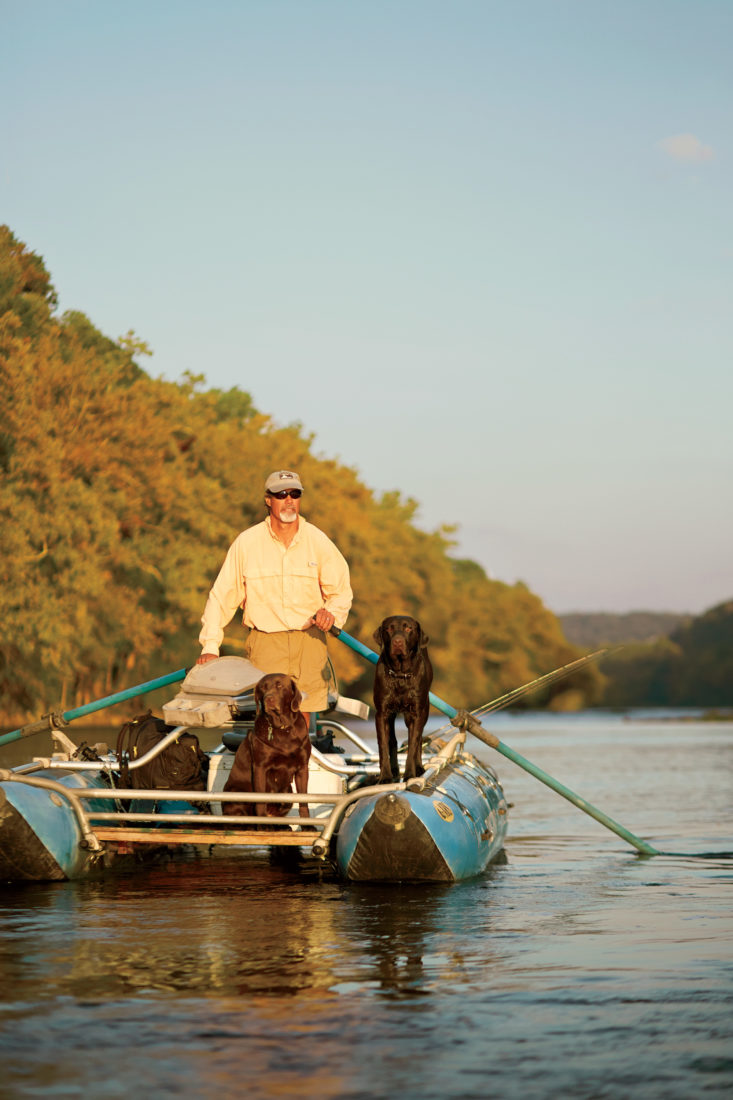
Photo: Jeff Greenough
Shawn Hash shares a boat with his two chocolate Labs.
Matt Maness
Boone, North Carolina
Over the last few years, a pair of East Tennessee’s trophy tailwater rivers—the South Holston and the Watauga—have turned Southern trout fishing on its head. Fish here can grow to monstrous, dare we say, Montana-like proportions. Matt Maness pins them down from drift boats he builds by hand, customized with Kevlar skins and aluminum skid plates to protect against fiberglass-shredding ledges. “I’m incredibly lucky to have two very different and very, very good rivers right here,” he says. The Holston is steeper, rockier, with bigger drops. The Watauga flows through a pastoral landscape. Each is filled with as many as two thousand trout per mile. “Fish counts are so high that there’s action throughout the day,” he says, “and there’s a shot at catching fifteen- to twenty-inch fish on dry flies pretty much every day of the year.”—foscoefishing.com
Mike and Lamar Boyd
Tunica, Mississippi
When it comes to waterfowling heritage, there are few Southern spots so hallowed as Mississippi’s Beaver Dam Lake. It’s here that Nash Buckingham made his reputation with perhaps his most famous story, “De Shootinest Gent’man,” and it was to these black cypress waters that Mr. Buck returned for nearly half a century. That makes Mike Boyd as much a caretaker of beloved duck-hunting history as a much-sought guide, and he excels at both. Boyd’s family has owned a chunk of Beaver Dam Lake since 1949, and he and his son, Lamar, shepherd hunters to some of Buckingham’s favorite duck holes. “I understand that there’s more going on here than chasing greenheads,” Boyd says. “I’m convinced we have some of the most consistent shooting in Mississippi, but I also know that’s just a part of why a lot of folks come.”—beaverdamducks.com
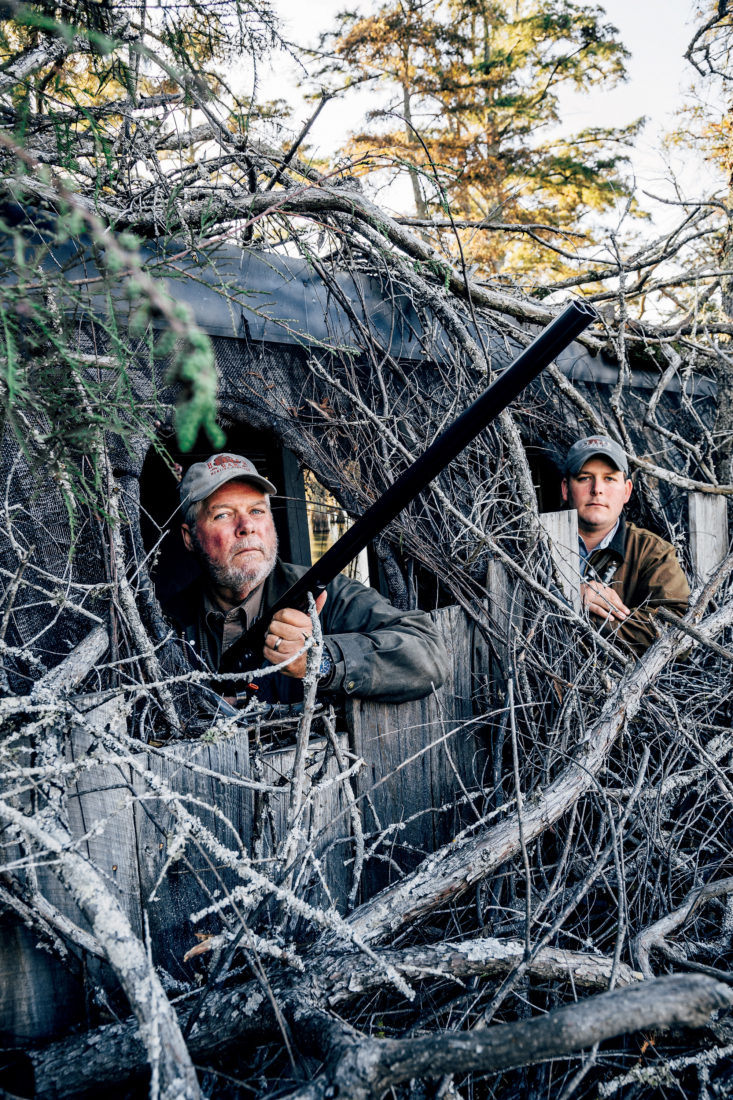
Photo: Peter Frank Edwards
Mike, holding Parker with thirty-four-inch barrels, and Lamar Boyd in the Cloverleaf Blind on Beaver Dam Lake.
Rocky Thickstun
Meraux, Louisiana
When Rocky Thickstun moved to South Louisiana eight years ago, he got a quick jump on realizing his boyhood dream of being a charter guide. He landed a job with a top outfitter, steering bait fishermen to schools of redfish and trout. “Everybody was a meat hunter,” he says. “If you didn’t load the box, it was a bad day. I hated that.” One day he was fly fishing on his own when a friend suggested he try guiding redfish on the fly. “That was unheard of,” Thickstun says. “I thought I’d starve to death.” Hardly. Thickstun has turned the vast Biloxi Marsh into a hunting ground for big redfish. Clients throw to twenty-pound bulls day in and day out. “It’s a team sport,” he says. “Fishing this way is interactive from the back of the boat to the bow, and you never get tired of seeing a serious redfish react to a great cast.” Interested anglers better strike just as fast. The word is out about the big reds on the east side of the Mississippi, and Thickstun, who fishes two hundred days a year, is already booking a year in advance.—saltyflylouisiana.com
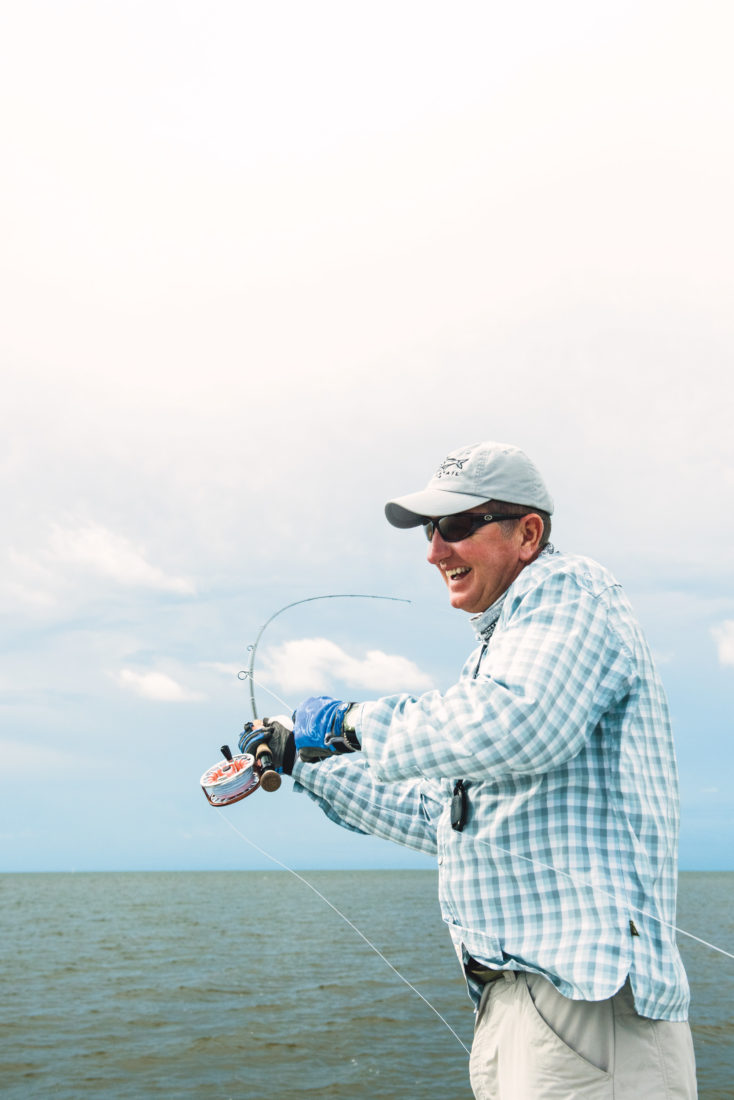
Photo: Rush Jagoe
Rocky Thickstun on the hunt for big reds.
Bob Walker
Jachin, Alabama
Bob Walker has been guiding hunters to Alabama gobblers for twenty-eight years, but it never gets old. After working a tom in close, Walker says, he’ll remark to a client that he could hear him practically panting at the moment of truth. “And they’ll tell me, ‘Mr. Bob, you were breathing hard, too!’” Walker’s stomping grounds include more than 30,000 acres of pinelands, hardwood creek bottoms, and river swamp at Bent Creek Lodge in west-central Alabama. He’s honed skills critical for a turkey guide. To be sure, you have to be an exceptional turkey hunter. “But you have to be a good people person, too,” Walker says. You might be sitting shoulder to shoulder for hours, and connecting with a client personally helps connect with a spring gobbler. And it doesn’t hurt to have three decades of experience guiding on the same ground. Hunting day after day, year after year, creates a deep well from which to draw when the turkeys don’t want to play. “As a guide, you have to go if it’s raining, go if it’s windy, go no matter what,” Walker says. “Do that enough, and you’ll learn plenty about turkeys.”—bentcreeklodge.com
Seth Vernon
Wilmington, North Carolina
The lower Cape Fear marshes around Wilmington, North Carolina, have inspired travelers and writers from Giovanni de Verrazzano to Robert Ruark, and redfish and rail guide Seth Vernon has been similarly smitten. Poling shallow craft through glades of spartina marsh flooded by fall tides, Vernon leads gunners to bags of clapper, Virginia, and sora rails that harken back to antebellum times. Rails, known locally as “marsh hens,” congregate in the higher-elevation humps of marsh during the high tides of September and October, and poling quietly into position, a retriever on deck, is as close as you can get to reliving a tradition heralded in historic art prints from the region. An added bonus: A crack at a true cast-and-blast, targeting tailing redfish before or after the peak of the tides. “I want people to experience those elements of sporting heritage and culture that connect me to such an abiding location as the Cape Fear River,” Vernon says.“This place pulls at my heartstrings, and if it was good enough for Robert Ruark to write about, then it should be more than good enough to inspire me to explore and share it.”—doublehaulguideservice.com







